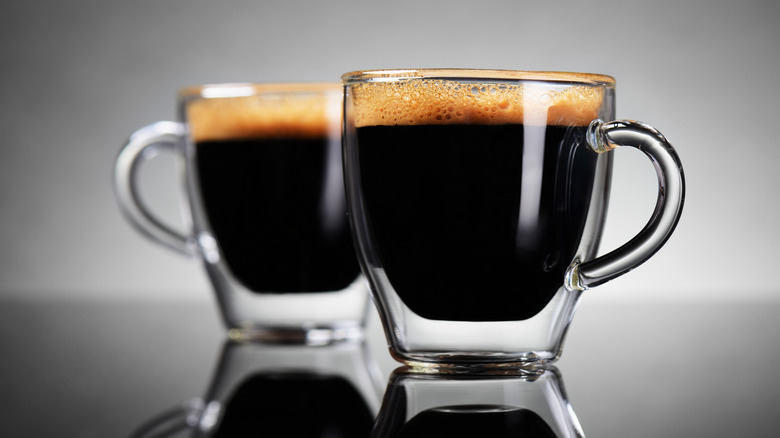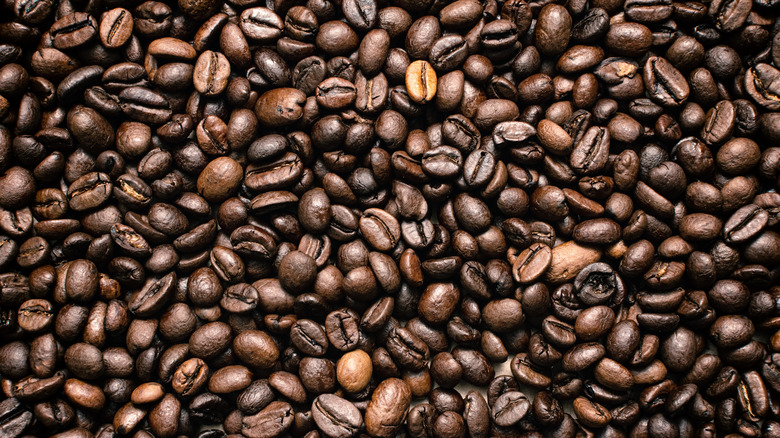The 2 Popular Types Of Coffee With The Most Caffeine
Want to get the most caffeine out of your coffee? The ultimate buzzy prize can be found in two neat and inky versions of the world's favorite caffeinated beverage: espresso and Turkish coffee. First off, let's consider the numbers. A standard two-ounce cup of Turkish coffee (which, when done right, comes with an eye-catching signature dark foam) delivers some 50 milligrams of caffeine. An espresso, meanwhile, will perk you up during that post-lunchtime slump with a single shot (1 ounce) injecting around 75 milligrams of caffeine into your coffee break. But, that number can vary greatly. Let's explore what warrants such a wide caffeine playing field.
Put simply, caffeine content comes down to three factors: coffee beans, their grind, and the brewing method of choice. In other words, we're talking bean roast (light or dark), how fine or coarse the grounds themselves are, and the bean-to-water ratio along with steeping time. Of course, it's generally a good idea to caffeinate with caution. The U.S. Food and Drug Administration (FDA) advises healthy adults to limit their daily caffeine intake to around 400 milligrams. Further recommendations slash that figure by half for pregnant women, and by half again for children up to the age of 12.
Get more caffeine for your buck
Roasting time does affect caffeine potency — light roast coffee serves up more caffeine than dark roast — however, the difference is negligible. The main discernible difference lies in the bolder taste of a cup brewed with dark roast coffee beans.
One factor that's certainly no myth is the grind: the finer the grind, the higher the caffeine. Fine grounds create a higher surface area that allows more water contact during brewing, for a more full-bodied and highly caffeinated coffee. Also, the water droplets' slower movement through the grounds enables them to pick up more caffeine on their way into the cup. Given the low water content and fine grounds used for an espresso or Turkish coffee, it's clear why these two brews deliver such a high caffeine hit. It's no coincidence, then, that vibrant Italians lean on the nation's ubiquitous Moka pot for their espresso-style coffee when at home.
Another key factor in the brewing process is heat. A hot cup of coffee will invariably give you higher caffeination because heat is excellent at extracting both caffeine and flavor from beans. While the thought of a cold brew espresso may sound like a dream on a hot summer's day, the reality is much more bean-heavy (i.e. you'll need a lot more beans to achieve the same caffeination as a hot espresso shot). Though the Roman and Ottoman empires may be long gone, Italian and Turkish coffee brewing methods are stronger than most, and here to stay.

